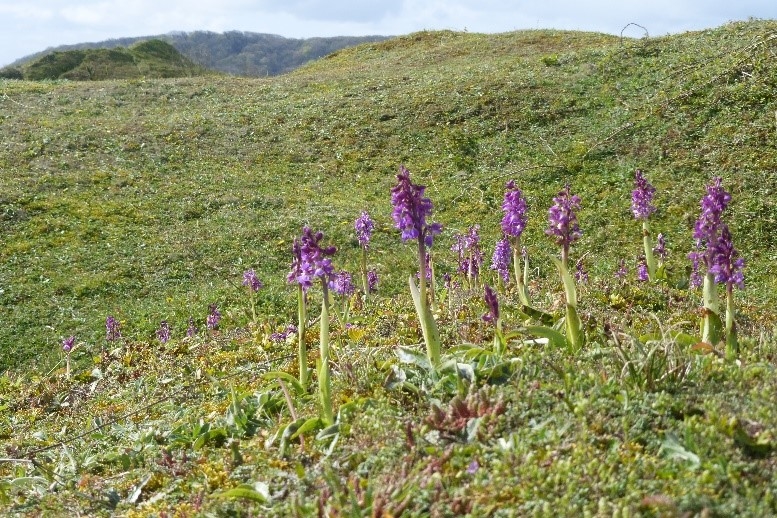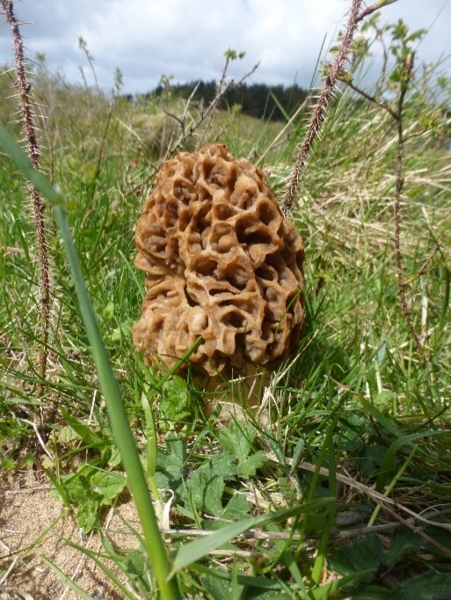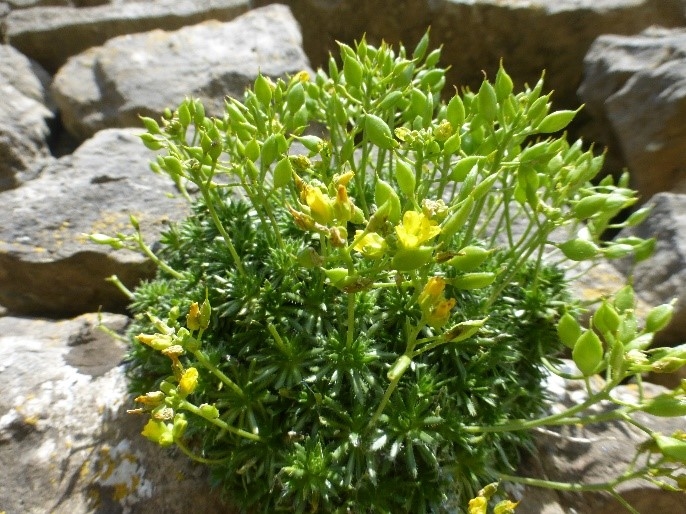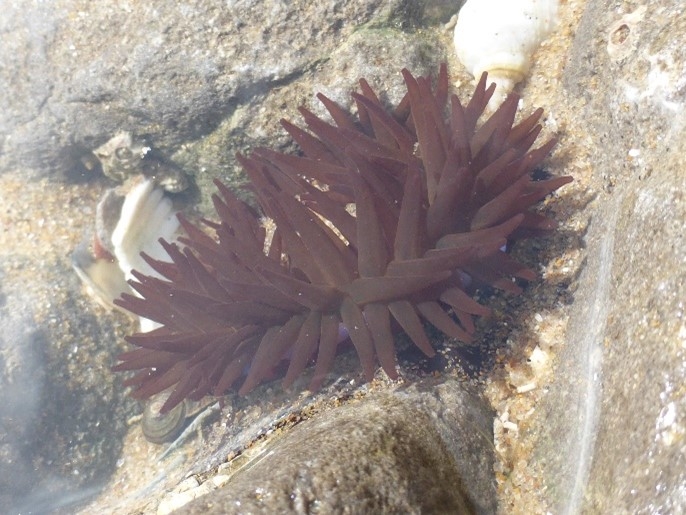A bumper edition this month. Every April is packed full of developments, but a week of my own adventures took us to the Gower peninsula in South Wales, and boy did we see some stuff. Some of it we could have seen elsewhere but some was site specific, some was time specific and one, a complete one-off. So, more pictures this time - three on land, four in/of the sea. Where ever you are in Gower you are not far from the sea and the extensive sand dunes.

I do hope that this picture does itself justice. On the Nicholaston dune system, on the South coast, our timing was just right for the appearance of these Early Purple Orchids and I have never seen such a dense display of any orchids. They were in little gatherings but in total there were simply hundreds. Some were nearly over, some fresh as daisies, and some not out yet. Some were small, but some were over a foot tall. And, in the bright sunshine, what an absolute joy.

On the North coast, in another expansive dune system, we spotted this one. You may recognise this as a Morrel. I’ve seen plenty of mushrooms, but never one of these. What a striking texture to the flesh! I think this had been around for a while, because a hole in the fruit body showed very clearly that it was hollow. It doesn’t look like anything that I would want to eat, but if my ID is correct it is one of those most sought after by foragers. BUT PLEASE, DON’T!
It was whilst walking on these dunes that we encountered a flock of birders. Unbeknown to us, there were reports of a Golden Oriole in the scrub. One by one these birders came past us, each carrying cameras with very long lenses. They showed little interest in our sandwiches or cake and only made conversation in case we had spotted the target of their endeavours. We finished our picnic and tried not to become infected with their obvious enthusiasm. We failed, and a hurried chase through the woods back into the dunes yielded the best view of a bird that is now unlikely to be breeding in the UK. In 1987 there were 27 breeding pairs, mostly centred around Lakenheath in Suffolk. By 2005 there were only 4 pairs. I remember getting a very brief sight of one, but I remember more vividly the sweetest of bird calls. I don’t feel that I need to see another Oriole, but I would dearly love to hear one again. I could go to France, though their numbers are falling there too, but I will probably not hear one in this country again. In the event, there were two adult males, blown off course by the winds that were now forcing us into the very same dunes for our own shelter. We only saw one of them, and two days later they were gone. A fortunate coincidence that occasionally happens – and if you put yourself out there, it is much more likely to happen. During the day we also spotted our first whitethroats of the year and newly arrived swallows. Both sights to gladden the heart and lift the clouds.
It was whilst walking on these dunes that we encountered a flock of birders. Unbeknown to us, there were reports of a Golden Oriole in the scrub. One by one these birders came past us, each carrying cameras with very long lenses. They showed little interest in our sandwiches or cake and only made conversation in case we had spotted the target of their endeavours. We finished our picnic and tried not to become infected with their obvious enthusiasm. We failed, and a hurried chase through the woods back into the dunes yielded the best view of a bird that is now unlikely to be breeding in the UK. In 1987 there were 27 breeding pairs, mostly centred around Lakenheath in Suffolk. By 2005 there were only 4 pairs. I remember getting a very brief sight of one, but I remember more vividly the sweetest of bird calls. I don’t feel that I need to see another Oriole, but I would dearly love to hear one again. I could go to France, though their numbers are falling there too, but I will probably not hear one in this country again. In the event, there were two adult males, blown off course by the winds that were now forcing us into the very same dunes for our own shelter. We only saw one of them, and two days later they were gone. A fortunate coincidence that occasionally happens – and if you put yourself out there, it is much more likely to happen. During the day we also spotted our first whitethroats of the year and newly arrived swallows. Both sights to gladden the heart and lift the clouds.

So, from being there at the right time, to being there in the right place. This slightly odd, certainly unfamiliar, plant is Yellow Whitlowgrass. This too is a rarity to the UK, and found only in South Wales. Its natural habitat is the fissures in the limestone cliffs. The rocks providing a home to this particular example are actually the rocks (not limestone) that form the walls of a castle high above the beach. It has found a suitable substrate in the lime mortar that fills the gaps between the rocks. There are more seedpods than flowers left on it now, but it is never-the-less a cracking example of enterprise, clearly happy in its adopted environment.

Talking of beaches, lets get down on one. I love being on the beach. I don’t want a deck chair or a beach hut, but give me a rockpool, a tideline, and a picnic, and I’m as happy as a sandboy. (Sorry). There is just as much wildlife on a beach as anywhere else. It’s just that the types of things you see are from a very specific environment. Wherever you get rocks that are sometimes under salt water, and sometimes exposed, then you can usually find these. “Oh, they’re not very interesting”, I can hear you say. But they are! The larger of these shells are of course limpets. The smaller I am sure you know are barnacles. Look the same, don’t they? Well, they’re not. Limpets are gastropods (like snails etc) whilst barnacles are actually crustacea (like crabs). If you have ever prised a limpet off the rocks and examined the creature inside you will immediately see the similarity with a snail. Barnacles are a bit more difficult to study, because of their size, but just learning these few facts makes me want to spend more time on the beach already! I used to prise a limpet off the rock, and remove the animal from within, tie it on a length of thread and use it to catch gobies in the rockpools on a Cornish beach. How I wish I could have done that as a child of 10, and not wait till 50.

And this brings us nicely to the rockpool. Oh, my word. Another world right in front of you. It would be easy to think of the world in the rockpool as temporary, it only exists for a few short hours between floods. But maybe that’s not the way to think of it. Maybe the rockpool is a little bit of sheltered underwater that we only have access to during those few hours between floods. The plants and animals that live there do so all the time. They don’t get trapped there, that’s their home. Further up the rocks, in the dry, this anemone’s brothers and sisters look very different, like a glossy, jelly blob. This one is still feeding through those extended tentacles.
I saved my favourite bit of the beach for last – the strand-line. And I have two pictures that represent some of the interest to be found there. All manner of stuff gets washed up there and it draws me to it every time I walk on the beach. Most of what can be found is not alive, although there are lots of species that make their living foraging amongst it, and they are fascinating, but that’s not where my own fascination lies.
I saved my favourite bit of the beach for last – the strand-line. And I have two pictures that represent some of the interest to be found there. All manner of stuff gets washed up there and it draws me to it every time I walk on the beach. Most of what can be found is not alive, although there are lots of species that make their living foraging amongst it, and they are fascinating, but that’s not where my own fascination lies.

This one, for instance. This is the upper jaw of a harbour porpoise. It didn’t need to hold the pose for this picture, but I have kept the frame confined to the teeth, in order not to upset the squeamish. Did you imagine a porpoise would have teeth like this? I didn’t. The lower jaw is similarly equipped. Imagine a fish getting between them. It’s unlikely to escape. Sometimes you have to seize your own opportunities when they are offered. It’s not often that you will get up this close to a living specimen, so do as much, or as little, examination as you feel able. Of course, in all circumstances it is best not to go poking about in dead creatures that are washed up. I didn’t. I simply took this picture and moved on to find the next interesting item
It always shocks me to see how much plastic is washed up on our beaches. We hear a lot about micro plastics, but big stuff too. On one beach we visited the bigger stuff was being removed every day. Long pieces of plastic rope were not to be seen, but short bits of every imaginable colour were present, each too small to be efficiently removed by the volunteer cleaners. Bottle tops, shoes, toys, if it has been made in plastic, it will be there. And the more exposed the shore is, the more stuff will accumulate. We try, but we cannot ignore it. I will not preach, but I find it hard not to pass comment.
Back to the organic flotsam and jetsam. On the left is an egg case. Not the usual mermaid’s purse in black, but a hard, gelatinous case with long, tangled threads, designed I suppose to help find an anchor on the sea bed. This is from the lesser spotted dogfish. On the right is the limy skeleton of a sea urchin. Most of the spines have been lost, and the striking features are the rows of double stitching that seem to be holding it all together. These casts are often referred to as sea potatoes. I found loads. As light as a ping-pong ball, I don’t know how their delicate frame survives long enough to give me the opportunity to study their form.
So, those are some of the highlights of only a quarter of the month of April. I didn’t mention the arrival of yellow wagtails, common sandpipers, the blossoming of the bluebell or the opening of red campion, or the blue tits I my nest box – or LOTS more. But I must mention the rediscovery of a book that’s laid for too long, un-used, on the shelf. The Collins Pocket Guide to the Sea Shore. First published in 1958, mine is from ’72. Second hand, it cost me £3.50. What an investment!


